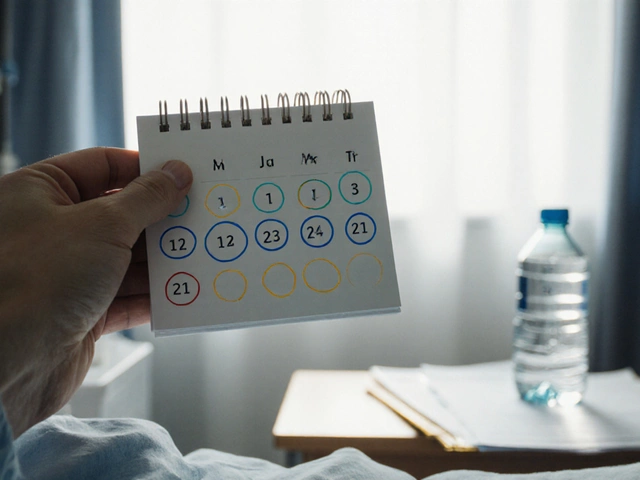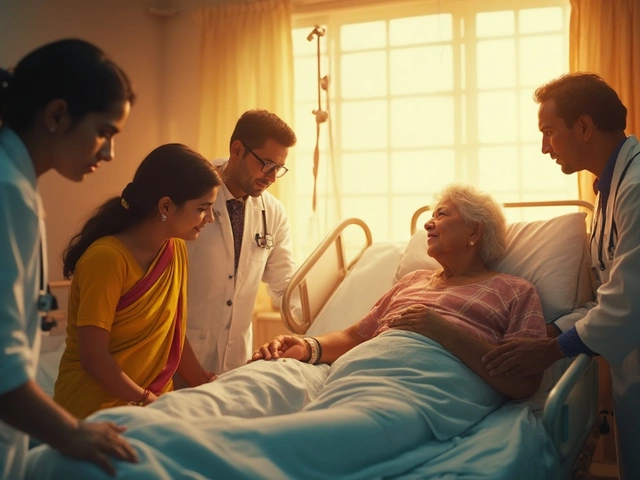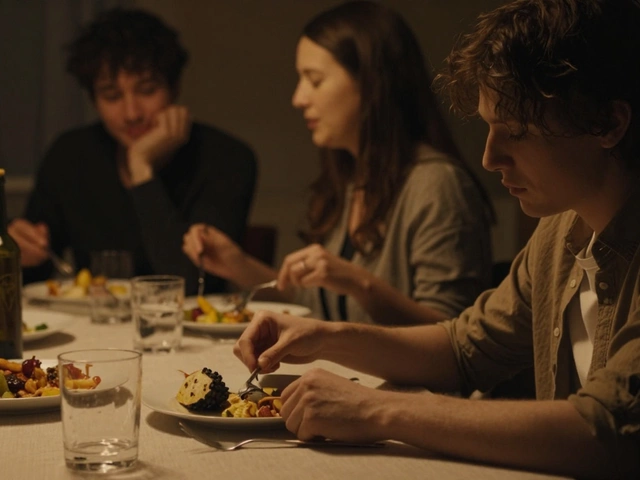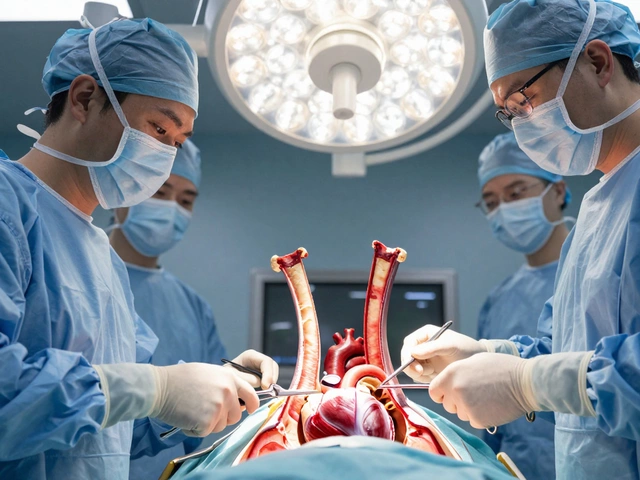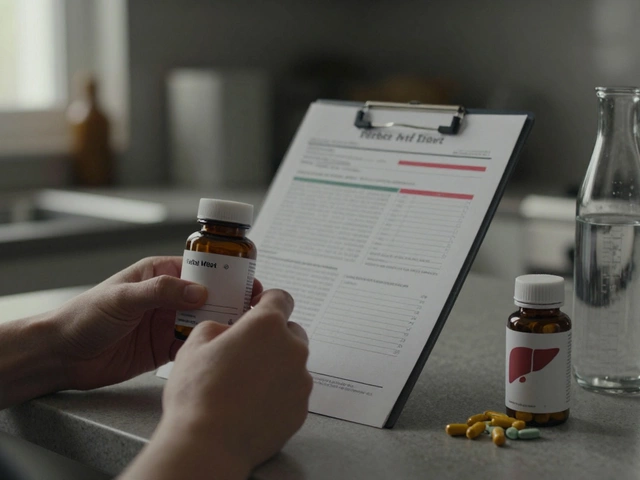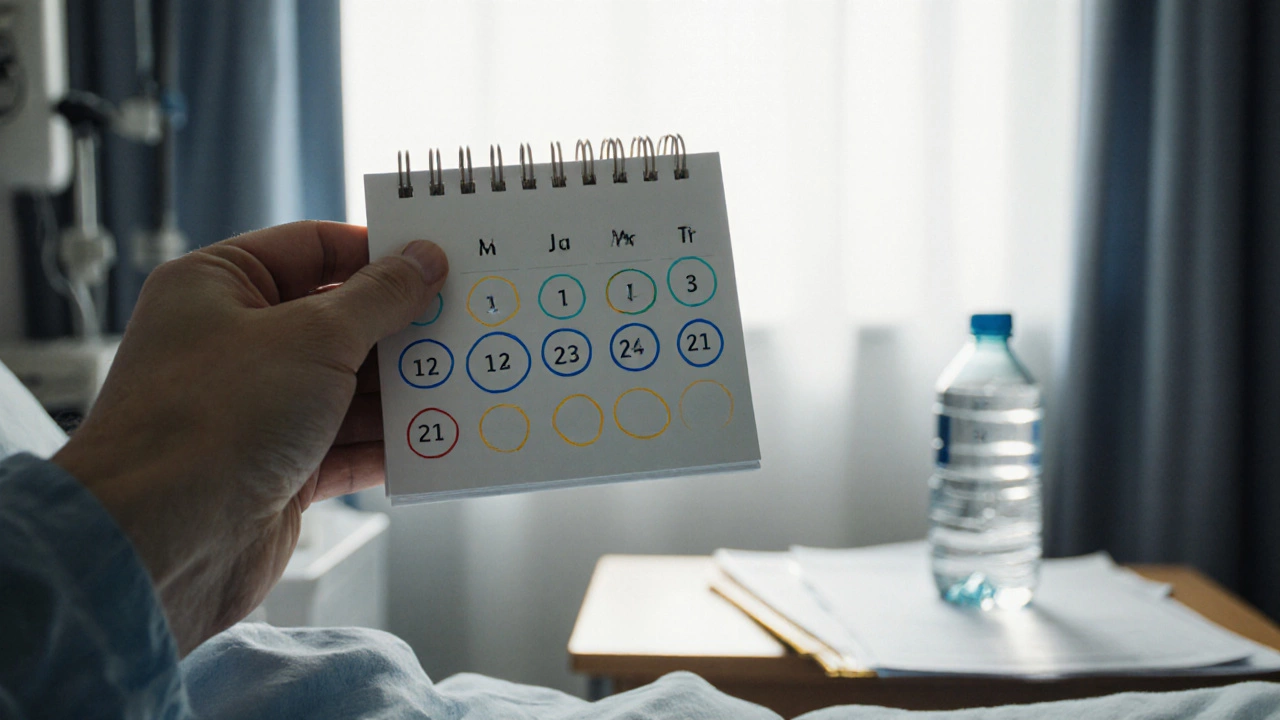
Is 4 Rounds of Chemo a Lot? What You Really Need to Know
Chemotherapy Treatment Calculator
What's Your Cancer Type?
Standard Treatment Range
Why this matters:
The number of rounds isn't the most important factor. Treatment duration depends on cancer type, stage, treatment response, and your body's tolerance. Clinical trials determine these ranges, but your oncologist may adjust based on your specific situation.
⚠️ This tool shows standard ranges from clinical guidelines. Your treatment may differ based on individual factors. Always discuss your specific plan with your oncologist.
When someone hears they need chemotherapy, the first question that pops up isn’t about how it works-it’s usually, "Is 4 rounds of chemo a lot?" The number sounds scary. It feels like a countdown to something worse. But the truth is, 4 rounds isn’t unusually high or low. It’s actually pretty common. What matters isn’t the number itself, but why it’s being given, what type of cancer it’s for, and how your body is handling it.
Why Do Doctors Pick 4 Rounds?
Chemotherapy isn’t a one-and-done treatment. Cancer cells divide quickly, and chemo drugs target rapidly growing cells. But they don’t kill every cancer cell in one go. That’s why treatment is broken into cycles-usually every 2 to 4 weeks. Each cycle gives your body time to recover before the next dose.
Four rounds typically means 3 to 4 months of treatment. For many cancers-like early-stage breast cancer, Hodgkin lymphoma, or testicular cancer-4 cycles is the standard starting point. The National Cancer Institute and UK’s NHS both list 4 to 6 cycles as typical for these types. It’s not random. Doctors base this on clinical trials that showed 4 cycles gave the best balance between killing cancer and keeping side effects manageable.
Think of it like cleaning a dirty carpet. You don’t vacuum once and call it done. You go over it a few times, let the dust settle, then go again. Chemo works the same way. Each round hits the cancer cells that survived the last one.
It’s Not One-Size-Fits-All
Some people get only 2 rounds. Others get 8, 12, or even more. Why the difference? It depends on the cancer type, stage, how aggressive it is, and how well your body responds.
For example:
- Early-stage breast cancer often uses 4 cycles of AC-T (doxorubicin + cyclophosphamide, then paclitaxel).
- Advanced lung cancer might need 6 cycles of carboplatin and pemetrexed before switching to maintenance therapy.
- Aggressive lymphomas like Burkitt’s may need 8 to 12 cycles because the cancer grows fast.
- Some ovarian cancers start with 6 cycles, but if scans show no signs of disease after 4, doctors may stop early.
There’s no magic number. Your oncologist picks the plan based on your specific cancer profile, not a checklist. If you’re responding well, they might cut back. If the cancer is stubborn, they’ll add more.
What Happens During Each Round?
Each chemo round usually lasts a few hours, though some treatments can be given as pills at home. The first day is often the hardest-infusion, blood tests, maybe steroids to prevent nausea. Then you go home and ride out the side effects.
Common side effects after round 1 or 2 include fatigue, nausea, hair thinning, and low blood counts. By round 3 or 4, your body often adapts. Some people feel better in later cycles because their team has adjusted anti-nausea meds or added growth factors to boost white blood cells.
But here’s something no one tells you: side effects don’t always get worse with each round. They can get better. Or they can stay the same. Or they can suddenly spike. Everyone’s different. That’s why tracking how you feel each week matters more than counting rounds.
How Do You Know If It’s Working?
Doctors don’t judge chemo success by how many rounds you’ve had. They look at scans, blood tests, and symptoms.
After 2 to 3 rounds, most oncologists order a CT scan or PET scan to see if tumors are shrinking. If they are? That’s a good sign. If they’re stable? Still okay. If they’re growing? That’s when treatment changes.
Some cancers, like testicular cancer, respond so well to chemo that even a few rounds can cure it. Others, like pancreatic cancer, rarely shrink dramatically-even after 6 rounds. That doesn’t mean the treatment failed. It means the goal shifted from cure to control.
Remember: chemo isn’t always about eliminating every last cancer cell. Sometimes it’s about buying time, reducing symptoms, or making surgery or radiation more effective.

When Is 4 Rounds Too Much-or Too Little?
There’s no universal answer. But here are red flags that might mean your plan needs rethinking:
- You’re in constant pain or can’t eat for more than 3 days in a row.
- Your white blood cell count stays dangerously low after two rounds.
- You’ve had a serious infection, hospital stay, or blood transfusion during treatment.
- Your tumor markers are rising, not falling, after 3 rounds.
If any of these happen, talk to your oncologist. They might switch drugs, lower the dose, or pause treatment. Pushing through side effects isn’t bravery-it’s risky.
On the flip side, if you feel great after 2 rounds and scans show the cancer is gone? Some doctors will stop early. That’s not uncommon. In fact, the European Society for Medical Oncology now recommends stopping chemo early if imaging shows complete response, especially in cancers like lymphoma or testicular cancer.
What Comes After 4 Rounds?
Many people assume chemo ends and life goes back to normal. But that’s not always true.
After 4 rounds, you might move into:
- Surveillance: Regular scans and blood tests every 3 to 6 months to catch any return early.
- Maintenance therapy: Low-dose chemo or targeted drugs (like bevacizumab or olaparib) taken for months or years to keep cancer in check.
- Immunotherapy: Drugs that help your immune system find and kill lingering cancer cells.
- Surgery or radiation: If chemo shrank the tumor enough to make removal possible.
Some people need more chemo. Others don’t. It all depends on the cancer’s behavior and your body’s response.
Real Stories: What People Actually Experienced
One woman in her 50s with early-stage triple-negative breast cancer had 4 rounds of chemo. She lost her hair, felt exhausted, but her scans came back clear. She didn’t need more. She’s now 5 years in remission.
A man in his 30s with stage 3 Hodgkin lymphoma got 6 rounds. He felt awful for months. But after 4, his scans showed no signs of cancer. His oncologist asked if he wanted to stop. He chose to finish the full plan-just to be safe. He’s been cancer-free for 8 years.
A woman with ovarian cancer had 4 rounds. The cancer didn’t shrink. So they switched to a different chemo combo. She ended up needing 8 total. But it worked. She’s alive today.
There’s no single path. The number of rounds is just one part of a much bigger story.

What You Can Do
If you’re wondering if 4 rounds is too much, here’s what actually helps:
- Ask for your cancer’s stage, type, and treatment goal. Is it cure, control, or comfort?
- Request a copy of your scan results and tumor markers. Track them yourself.
- Write down side effects each week. Don’t wait for your appointment to mention them.
- Ask: "What happens if we stop now? What happens if we keep going?"
- Get a second opinion. It’s not disloyal-it’s smart.
You’re not just a number. You’re a person with a body, a life, and a right to understand what’s happening to you.
Final Thought
Is 4 rounds of chemo a lot? Compared to what? Compared to 2? Too little. Compared to 12? Too much. But compared to what most people actually need? It’s just right. The number doesn’t define your strength, your hope, or your outcome. What matters is that you’re getting the right treatment for your cancer-and that you’re being heard along the way.
Is 4 rounds of chemo considered standard treatment?
Yes, 4 rounds is a standard number for many cancers, including early-stage breast cancer, Hodgkin lymphoma, and testicular cancer. Clinical trials have shown this number balances effectiveness with manageable side effects. But it’s not a rule-some cancers need fewer, others need more.
Can you stop chemo after 4 rounds if you feel better?
Feeling better doesn’t mean the cancer is gone. Doctors make decisions based on scans and blood tests, not how you feel. If scans show no cancer after 4 rounds, your oncologist may stop treatment. But if cancer remains, even if you feel fine, they’ll likely continue.
Do side effects get worse with each chemo round?
Not always. Some people feel worse with each round. Others find their body adapts and side effects improve after the second or third cycle. It depends on the drugs, your health, and how well your care team manages symptoms like nausea or low blood counts.
What if 4 rounds don’t shrink the tumor?
If the tumor hasn’t shrunk after 3 or 4 rounds, your oncologist will likely change the treatment plan. This could mean switching to a different chemo drug, adding targeted therapy, or moving to immunotherapy. Sticking with a drug that isn’t working won’t help-it just adds side effects.
Is it safe to take a break between chemo rounds?
The schedule is designed to let your body recover. Most cycles are spaced 2 to 3 weeks apart for this reason. Skipping a round without medical advice can let cancer grow back. But if side effects are severe, your doctor may delay the next round by a week or two-it’s common and safe when done under supervision.
How do doctors decide how many chemo rounds to give?
They use guidelines based on cancer type, stage, and clinical trial results. For example, breast cancer protocols are based on studies showing 4 to 6 cycles of AC-T are effective. But they also adjust based on your response. If scans show the cancer is gone early, they may stop. If it’s resistant, they’ll change course.
Next Steps If You’re Starting Chemo
- Ask your oncologist to explain your treatment plan in plain language-not just medical terms.
- Write down your questions before each appointment. Don’t rely on memory.
- Keep a symptom journal. Note fatigue, nausea, pain, sleep, and mood changes.
- Know who to call if you have a fever, vomiting for 24 hours, or can’t keep fluids down.
- Ask about supportive care: nutritionists, physiotherapists, or counseling services.
Chemo isn’t a race. It’s a process. Four rounds might feel long, but it’s often the exact amount needed to give you the best shot at a long, healthy life after cancer.

Arnav Singh
I am a health expert with a focus on medicine-related topics in India. My work involves researching and writing articles that aim to inform and educate readers about health and wellness practices. I enjoy exploring the intersections of traditional and modern medicine and how they impact healthcare in the Indian context. Writing for various health magazines and platforms allows me to share my insights with a wider audience.
About
Medical Resource Center India is a comprehensive online platform dedicated to providing reliable health information and medical resources in India. Explore a wide range of articles, tips, and advice on medicine, healthcare services, and wellness. Stay informed about the latest developments in Indian medicine and access valuable insights into maintaining a healthy lifestyle. Discover expert guidance and health solutions tailored for every Indian citizen. Your go-to destination for authoritative medical knowledge in India.
